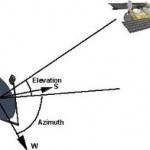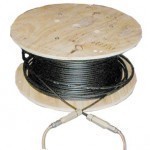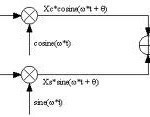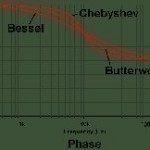In order to understand how sunspots effect radio reception, you need to understand that the light waves and radio waves that the sun emits are both categorized as electromagnetic (EM) radiation. While light waves are visible to the human eye, they are still electromagnetic waves that oscillate. There are many electro magnetic waves, some oscillate very slow and some very fast. The slowest are the long-frequency radio waves. X-rays are some of the fastest EM waves and the light that we see usually falls in the middle of the electromagnetic Read More
Elevation

Elevation refers to the varying heights of objects on, and around, the Earth. Elevation on Earth is usually used to measure the difference in height of land masses in comparison to Sea Level. Elevation in Earth’s orbit is used to measure the difference in height of satellites in comparison to the Earth’s horizon from any given point. In the latter form, elevation is a critical factor in properly configuring a satellite antenna. How Elevation Works Elevation, in terms of satellites, is measured in degrees and depends on the horizon Read More
Pulse Amplitude Modulation
Pulse Amplitude Modulation (PAM) is the simplest form of pulse modulation. This technique transmits data by varying the voltage or power amplitudes of individual pulses in a timed sequence of electromagnetic pulses. In other words, the data to be transmitted is encoded in the amplitude of a series of signal pulses. PAM can also be used for generating additional pulse modulations. If you look at this from a purely theoretical standpoint, the possible pulse amplitudes in pulse amplitude modulation can be infinite. This is the case with analog pulse amplitude Read More
Solenoid
A solenoid moves an iron core through the center of a wire coil when current flows through the coil. It is different to a relay which uses an electromagnet with a fixed iron core. Typical voltages used in solenoids are 12 and 24 volts. Some solenoids are controlled by pneumatic and hydraulic pressure instead of electricity. Solenoid Actuators Solenoids actuators have a spring in the base at the base of the iron core. When current flows through the solenoid, the electromagnetic field overcomes the spring resistance, and pulls the rod Read More
Laser Video Projector
A laser video projector is a device that a video signal and converts the signal to a modulated laser beam to project moving images. It works either like the electron beams of a Cathode Ray Tube television or CRT which reads the whole picture a dot at a time and modulates a high frequency laser directly, or like that of a DLP which spreads optically as it modulates the laser and reads the image a single line at a time. Laser video projection can produce the widest range of colors Read More
Watt
A watt is a standard unit of power. It is equal to one joule of energy per second. For electrical power, one watt is equal to one ampere of current per second. History of Watt A watt was formally defined at an international conference in 1889. It is named after James Watt (1736-1819), a Scottish inventor famous for his steam engines that powered the Industrial Revolution. The symbol for watts is a capital letter W. Measuring Watts A watt is measured using a wattmeter. An analogue wattmeter uses a pair Read More
Fractal Antenna

A fractal antenna is a diamond-shaped antenna that maximizes the total amount of material within a given amount of space that transmits or receives electromagnetic waves. Fractal antennas do this by making each section of the antenna its own separate dipole. Because of this design, fractal antennas operate at many different frequencies and wavebands, allowing them to be used for a wide variety of applications, most of which can be found in the cellular telephone and microwave communication industries. How Fractal Antennas Work Fractal antennas maximize the number of dipoles Read More
IFL (Interfacility Link)

An IFL, or Interfacility Link, is a cable system that is used in facilities to connect an outdoor unit and an indoor unit. An outdoor unit refers to the satellite receiver or coaxial cable that connects a service provider to a company while an indoor unit refers to the coaxial cables, routers, or transmitters inside the building. IFLs are used to minimize the amount of interference received on the transmission by rerouting the signal through a combination of different technologies. How IFL Works In a typical direct broadcast satellite Read More
8PSK

8PSK (8 Phase Shift Keying) is a phase modulation algorithm. Phase modulation is a version of frequency modulation where the phase of the carrier wave is modulated to encode bits of digital information in each phase change. The “PSK” in 8PSK refers to the use of Phased Shift Keying. Phased Shift Keying is a form of phase modulation which is accomplished by the use of a discrete number of states. 8PSK refers to PSK with 8 sates. With half that number of states, you will have QPSK. With twice the Read More
Chebyshev Filter

A Chebyshev filter can either be analog or digital, and is an improvement on the Butterworth filter as it has a steeper roll-off and a greater passband and stopband ripple. These filters minimize overall error between actual and idealized filter characteristics for the designed range of the filter. The filter was named after Pafnuty Chebyshev, who developed the polynomials that the filter design was created from. Since there is a passband ripple in Chebyshev filters, they are not the best for all applications. Their primary purpose is to separate a Read More


Share on: